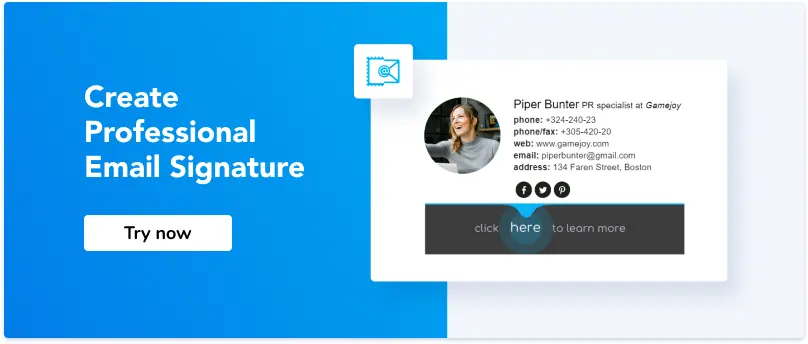How to Write The Best Follow up Emails After No Response: Tips and Examples.
1. When to send follow up emails
2. 6 things to do before sending follow up emails
3. How to write the best follow up email
4. Common mistakes in business follow up emails
5. Follow up email templates and samples
Useful tools:
1. Newoldstamp - Email signature marketing
2. SendGrid - Email builder and sender
3. Boomerang - Tool for scheduling emails
4. Mailtrack - Email link opens tracking
5. Canva - Online tool for making designs
“Sending follow-up emails is a must.” — you probably heard this thousand times. But often, many of us might feel uncomfortable when writing follow-ups. We think we are annoying. And if the recipient didn’t respond, they were not interested and didn’t want to hear from us anymore. However, in reality, people receive tons of emails every day. All these letters naturally fall to the bottom of the inbox. So if you don’t get a response immediately, it doesn’t mean that the person is ignoring you or isn’t interested. They probably lost your email. That’s why you definitely have to follow up unless you want to miss a sale or any other important opportunity. In this blog post, we gathered all the essential tips to help you follow up properly and get a response.
When to send follow up emails
Before we get to the follow-up email format, let’s decide how long should you wait before sending your follow up email after no response. The vast majority of email messages are opened the day they are sent. And if the recipient is going to answer, they most likely will do that the same day. But don’t follow up too quickly. Wait at least two or three days.
6 things to do before sending follow up emails
While you wait, do a little preparation to increase your chances of success.
-
Make a plan for follow up emails
That would be perfect if you develop a concrete set of rules such as the time, frequency, quantity, and follow up email letter itself.
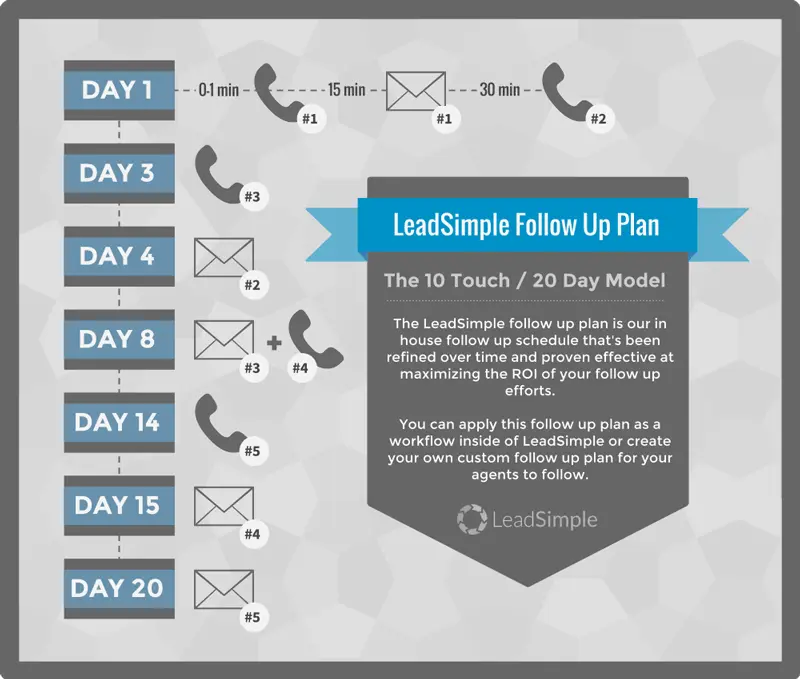
source: LeadSimple
-
Do good research
Search for some information about your recipients on the Internet. You can find something interesting and use it in your email.
-
Decide your follow up purpose
Never send your follow up email to clients unless you know what you want to achieve with this email. Here are some possible purposes: make cooperation, arrange a meeting, close a sale, get some information, etc.
-
Have your materials prepared
Prepare all text and files you need for your email.
-
Try to automate your follow-ups
Automated follow-up emails can save you hours, especially if you have a lot of clients. Use some CRMs or automation tools like Mixmax to make your life easier.
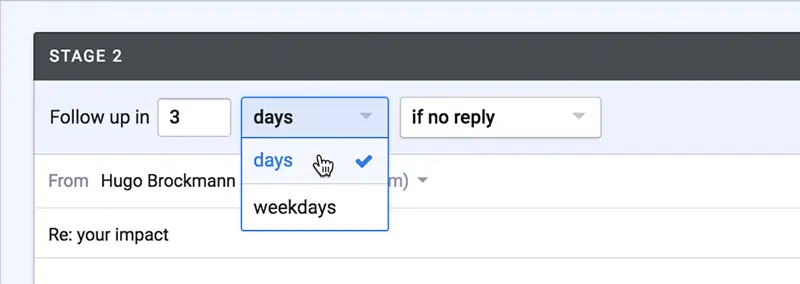
-
Use one channel for follow up at a time
It doesn’t mean that you can’t use any other channels than email, but be sure not to reach out on all channels at once. It will look too persistent if you send follow-ups via LinkedIn and email on the same day.
How to write the best follow up email
Now that you understand how important it is to follow up, and how long you should wait before reaching out again, let’s learn how to start a follow-up email and what to include in it.
-
Personalize your message
If you want your follow-up email to stand out in a crowded inbox, do your best to make it human, not like automation sequences that are sent by a machine. Show the reader you know who they are and what they do.
-
Write the best follow up email subject line
Try to make it creative and attractive. Also, test different subject lines to choose the best one.
-
Add the recipient’s name
Adding the recipient’s name to your follow-up email subject line can make your email more personalized. The company name could work too.
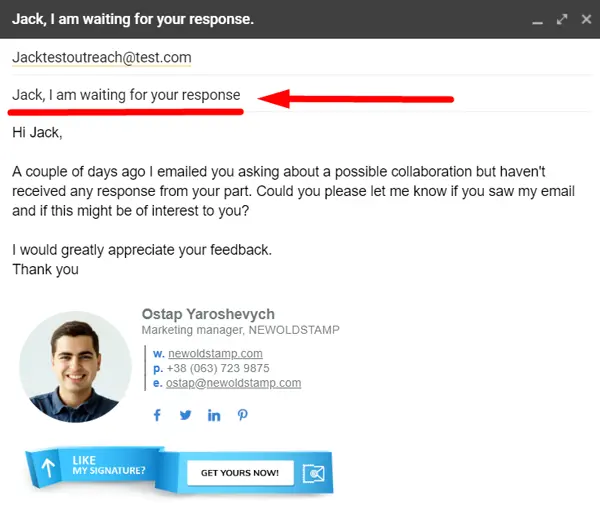
-
Ask a question
You could also try to add a question related to the recipient’s business or company. But do it only when it makes sense.
-
Provide only the most important information
Provide the key information right away. It is good to give the exact email purpose here.
-
Try to give more benefits
Highlight advantages to the reader or send some gifts, coupons, etc.
-
Refer to previous emails
Draw the recipient’s attention to a previous connection. Maybe they forgot to read your previous message and referring to it might help a lot on the way to understanding each other better.
Related article: “How to Write a Kickass Follow-up Email Subject Line for Sales to Close the Deal.”
-
Add relevant value
Avoid lazy follow-up email letters as they don’t add anything of value but only clutter the recipient’s inbox. So annoying! Instead, make it high quality and relevant to the reader. For example, “I noticed that you downloaded a free trial version of our app. I have some resources that are great for getting started.”
-
Include a CTA
Invoke the recipient to respond. Add a question, suggest some meetings, and so on. It must be relative to your purpose. For example, if you want to arrange a meeting, consider adding the “Book a meeting” CTA at the end of your email.
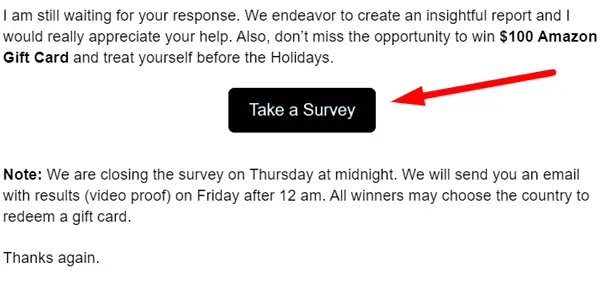
Read more about CTAs in emails: “Outbound Emails: The Best Personalized CTA Practices to Help You Boost Conversions.”
-
Close your follow up email
Usually, we close our emails with some personal messages like “Let me know if you have any questions.” But you can try to make your closings more specific and this way to encourage the reader to respond. For example, “I am trying to get a better understanding of your company. Where can I learn more about [add a project name, team, company announcement, etc.]?”
-
Try to use relevant visuals in your email
Keep in mind that using video or images in your email could increase the response rate. Add visuals when appropriate.
-
Add email signature
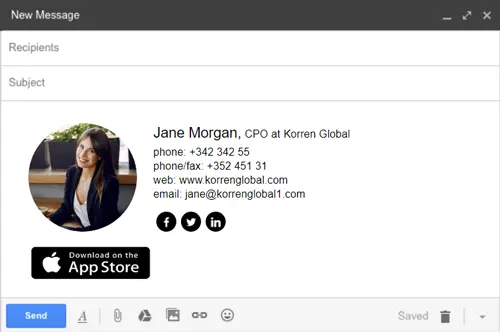
A good professional email signature will increase your awareness and make your email more human/personal and attractive. You can use a banner in your email footer as an additional call to action. Also, some case studies, guides, and articles in your banner could warm up your recipients and give you a fast response.
Common mistakes in business follow up emails
Here are five common mistakes you should avoid when it comes to sending follow up emails.
-
Bad time for following up
Although there is no specific time that is perfect for follow-ups, we can assume that Mondays and Fridays are not the best days to remind someone about your previous email. On Monday, people are always busy at meetings preparing for the week ahead. On Friday, most of us are either in a hurry because of a deadline, or already dreaming about a weekend. That makes Tuesdays, Wednesdays, and Thursdays the best days of the week to follow up. It is also better to send such emails in the morning when the recipient’s mind is still fresh. Don’t follow up too often or too early.
-
Wrong automation settings
Check all things in your automation tool (contact and sender information, template, date, etc.) Be sure that everything was set up properly. The more personalized and customized your follow up letter is, the more likely it is that the recipient will get back to you.
-
Too long and not relevant email
Books are read, business emails are scanned. Don’t assume the recipient has a lot of time to read your long emails. Try to keep them all short and to the point.
-
Excessive emotionality in emails
Your follow-up emails should be professional without any rude and emotional words. Avoid angry and non-polite style of writing.
-
Not tracking metrics
Without measuring your follow up performance, you won’t know if what you are doing is working.
Follow up email templates and samples
#1 Follow up email template “Providing value”
Subject: Here is the guide we were discussing
Hi Mr. Backer,
It was a pleasure meeting you last week and find out more about your goals for ABC company.
I am following up with a link to the guide with concrete steps you should take to grow your business account on social media. You can download it from our website here. Based on what you told me about your budget, I think you’ll find section five particularly useful.
Feel free to contact me if you have any questions. If not, I am looking forward to meeting you again at the XYZ conference next month.
Best regards,

#2 More informal follow-up email template
Subject line: Still any interest in our service?
Hi Magda,
How are things at ABC? I saw you blasted a new blog post yesterday. Great job!
I sent you a few emails last week, but you didn’t reply. Should I message you back in a week, or did you go in a different direction?
Sincerely,

#3 Follow-up email template “Who said you couldn’t follow up after they said no?”
Subject: Wanted to let you know about our 30% off offer
Dear Dr. King,
I hope you remember me – we discussed the needs of your private practice a few months ago, but you decided not to pursue it.
We are currently having a 30% off fees for the first two months for new customers. I thought you might be interested in this offer if our services are still relevant to you.
Check out this page [link] for more information.
If you have further questions, please feel free to reply to this email, and I would be happy to set up a call asap to discuss your options.
Best regards,

Conclusion
Writing a great follow-up email isn’t always easy. It takes time and requires some effort, but it definitely pays off. In this article, we shared a lot of valuable tips to help you create the best follow up email after no response.
Here are some of the key takeaways:
- If the person doesn’t reply to your email, it doesn’t mean they are ignoring you or aren’t interested in what you offer;
- It’s important to follow up, but not too quickly. Wait at least two or three days;
- Know why you follow up and indicate it in your subject line;
- Always personalize. Show the reader you know who they are and what they do;
- Include a clear call to action at the end of the email;
- Put some case studies, guides, and articles to your email signature banner to warm up your recipients and get a fast response;
- Tuesdays, Wednesdays, and Thursdays are the best days of the week to follow up;
- A great follow-up is short, personal, and even fun when appropriate;
- Offer something of value in your follow-ups.


